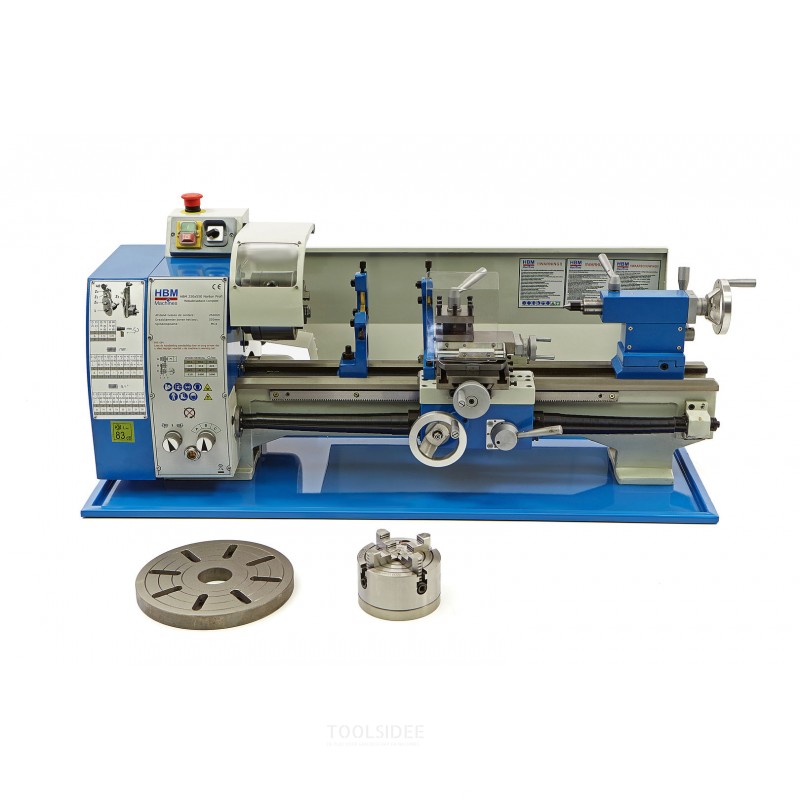The HBM looks similar to the Warco WM250 and other generic Chinese Lathes:


Details vary – they're alike rather than standard – but all have similar capability. They're made by at least two major makers.
Worth browsing the Grizzly website to see if they sell the same machine because manuals for the US market are often more complete than the basic material supplied with British machines. The Grizzly G0602 looks similar, it's manual might be useful,
My lathe is the next size up, and it also can take 12mm tooling. It's the maximum size the lathe will put at centre-height rather than the recommended size, and best approached with caution because not all nominal 12mm tools will shim to centre-height. I mostly buy 10mm tools because they're guaranteed to fit! Shimming up is easier than shaving metal off a toughened 12mm tool!
Larger tooling has the advantage of being stiffer than smaller, usually a good thing, but I often find big cutters too clumsy for what I do. 10mm or 8mm is more appropriate and occasionally 6mm. The choice depends on how much space is available between job, chuck and cutter and the delicacy of the job in hand. 10mm is a reasonable size to learn on, and might be all that's needed. It depends on what the lathe is used for over time, which is why second-hand machines often come with a strange mix of tooling!
Must be possible to adjust the cutter to centre height, and then to reduce vibration, which is usually done by minimising overhang. Reach for a big cutter if a lot of metal must be removed quickly, but bear in mind hobby lathes aren't beefy enough to work at industrial rates and using smaller cutters is a good way of reducing stress and strain caused by over-enthusiastic operating.
Dave
Huub.







